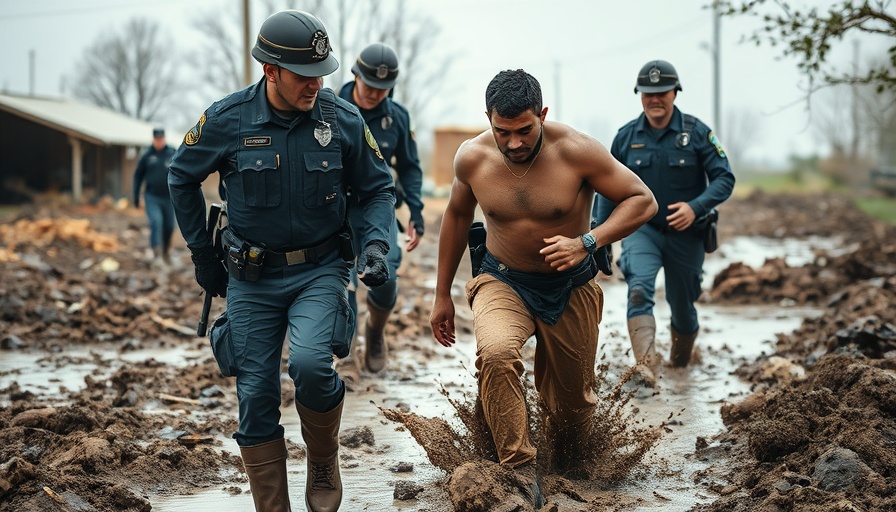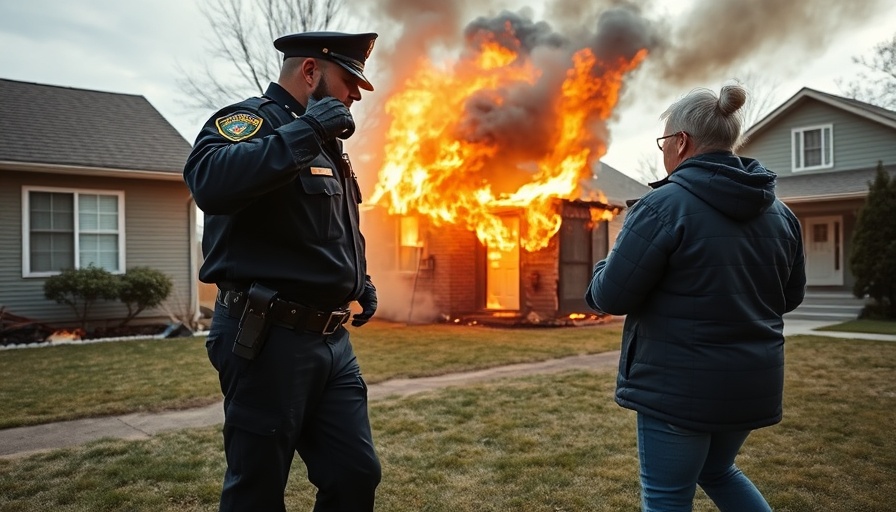
A Heroic Response: Texas First Responders Overcome Adversity
As floodwaters receded across the Texas Hill Country following a devastating July 4 disaster that claimed 95 lives, the resilience and dedication of first responders have emerged as a beacon of hope in this tragic narrative. In the heart of Kerr County, law enforcement and emergency personnel have been tirelessly working against daunting conditions to locate missing individuals and provide assistance to affected survivors.
The Gray Clouds of Tragedy
With 36 children among the confirmed fatalities and over 160 individuals still unaccounted for, the scope of this catastrophe underscores the urgent need for effective collaboration in public safety agencies. Sheriff Larry L. Leith emphasized, “We have over 2,100 people out here at some capacity on this incident,” showcasing the scale of response as community members join their efforts.
Real-Life Heroes: Officers in Action
Determined to make a difference amid chaos, individuals like Kerrville Police Sgt. Jonathan Lamb have become unexpected heroes. Instead of retreating when trapped by rising water, Lamb began rescuing stranded individuals. Using his public address system, he bolstered the spirits of those in peril as he coordinated a team that included volunteer firefighters, a doctor, and other officers to perform daring rescues.
In an inspiring account of courage, Lamb noted that, “In that first hour, they evacuated over a hundred homes and rescued over 200 people.” These deeds reflect more than operational efficiency; they highlight invaluable leadership qualities necessary in moments of crisis. It’s this kind of proactive approach that can shift police-community relations positively.
Integrating Technology in Crisis Management
The compelling intersection of technology and emergency response is more relevant than ever in today's policing landscape. Utilizing drones to assess damage and gather data can expedite search and rescue operations, exemplifying how technological innovation can improve operational workflows and increase officer safety. Enhancements in communication tools have also played a critical role, enabling coordination between multiple agencies and empowering community volunteers to assist during critical moments.
Learning From Tragedy: What’s Next for Law Enforcement?
The events in Kerr County serve as a powerful reminder for police departments and governmental policymakers to prioritize effective training for officers in crisis situations. Understanding how to act swiftly in high-pressure environments can save lives, making ongoing training and simulations invaluable for law enforcement careers.
This incident also raises discussions around law enforcement policies related to community engagement and accountability during such emergencies. As the investigations unfold, it will be crucial for departments to reflect on their operational protocols and ensure they meet the standards of safety and community trust.
Toward a Brighter Future for Public Safety
As communities rebuild from this tragedy, embracing a culture of teamwork and heroism like that of Kerr County's first responders can set the tone for future policing strategies. This collaboration will not only bridge gaps between law enforcement and the citizens they serve but will also enhance overall community resilience and recovery.
Conclusion: The Call to Action
The courage displayed by first responders throughout this disaster is noteworthy; however, the moral lies in the importance of preparedness, community connection, and teamwork. As policymakers and public safety officers chart a course moving forward, the lessons gleaned will be vital in ensuring that every law enforcement entity is equipped for whatever challenges lie ahead. Commitment to officer training, community engagement, and the infusion of technology into emergency responses can be transformative.
 Add Row
Add Row  Add
Add 

 Add Element
Add Element 


Write A Comment